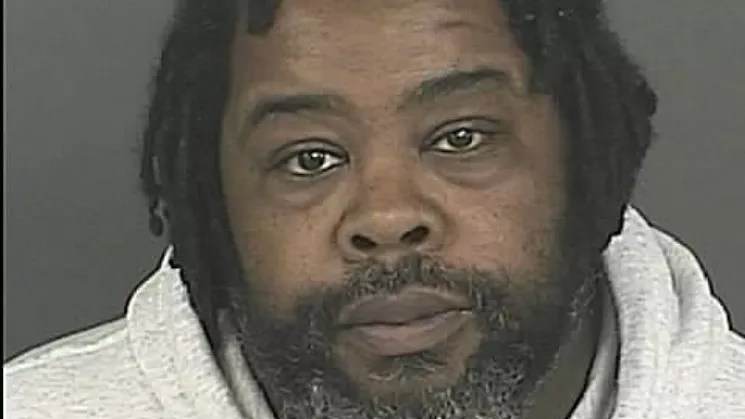
Denver District Attorney’s Office

Audio By Carbonatix
Keith Hammock has been found guilty of second-degree murder and more for killing one teenager and wounding another last October after they’d jumped a fence into his back yard, where he was growing marijuana. The verdict demonstrates the limitations of Colorado’s famous Make My Day law, especially when it comes to pot grows deemed illegal.
At around 2:08 a.m. on October 9, 2016, according to an arrest affidavit accessible below, the Denver Police Department received a call from a fourteen-year-old boy who said he’d been shot and his fifteen-year-old male friend was dead. The teen didn’t know his location, but a DPD shot-spotter report pinpointed the address as being near Hammock’s residence, at 2830 Race Street.
Upon their arrival at the scene, detectives found a black semi-automatic handgun and eyeballed “numerous mature suspected marijuana plants” growing nearby, some in five-gallon orange buckets.
Shortly thereafter, the cops contacted Hammock and Eleise Clark-Gunnells, the actual owner of the house; she identified Hammock as her roommate and former boyfriend and said he was the one growing the marijuana. Shortly thereafter, after obtaining a warrant, law enforcers searched the second-floor bedroom occupied by Hammock, where they located two long rifles, spent cartridge casings and ammunition, as well as a window screen that appeared to have been altered or damaged.

Keith Hammock’s back yard.
CBS4 file photo
Hammock wasn’t immediately charged with a crime in the incident, but our Alan Prendergast, who’s explored the question of whether Colorado’s Make My Day law should be expanded in 2013, suggested that the measure might not be applicable in this instance. “Although such attempts are rarely successful, the statute has sometimes been part of a self-defense claim in the shooting of a troublesome relative, a spouse’s lover or a drug dealer peddling bad meth,” Prendergast noted, adding that “whether the law has any application to pot growers seems to depend largely on where the pot is being grown. There’s no allowance in the law for shooting fleeing suspects who’ve already departed the residence, nor does it generally cover fracases in the street.”
An additional factor involved the status of the grow – and the conclusion didn’t break in Hammock’s favor. A week-plus after the shooting, the Denver District Attorney’s Office charged him with two counts of first-degree murder, four counts of attempted murder, and one count each of manufacture and cultivation of marijuana. The filing also alleged that Hammock wounded a seventeen-year-old in September 2015 in a similar shooting.
The trial finally got under way last month, and after five days, a jury convicted Hammock, but not of murder in the first degree. Instead, he was found guilty of second-degree murder, attempted second-degree murder, first-degree assault with a deadly weapon and two marijuana counts – one for processing or manufacturing, the other for cultivation.
The verdict suggests that the jurors’ sympathy for Hammock’s claim that he was simply defending his domicile was extremely limited – probably in part by their conclusion that his marijuana grow was against the law. He’s scheduled to be sentenced on October 4. Click to read the complete Keith Hammock arrest affidavit.